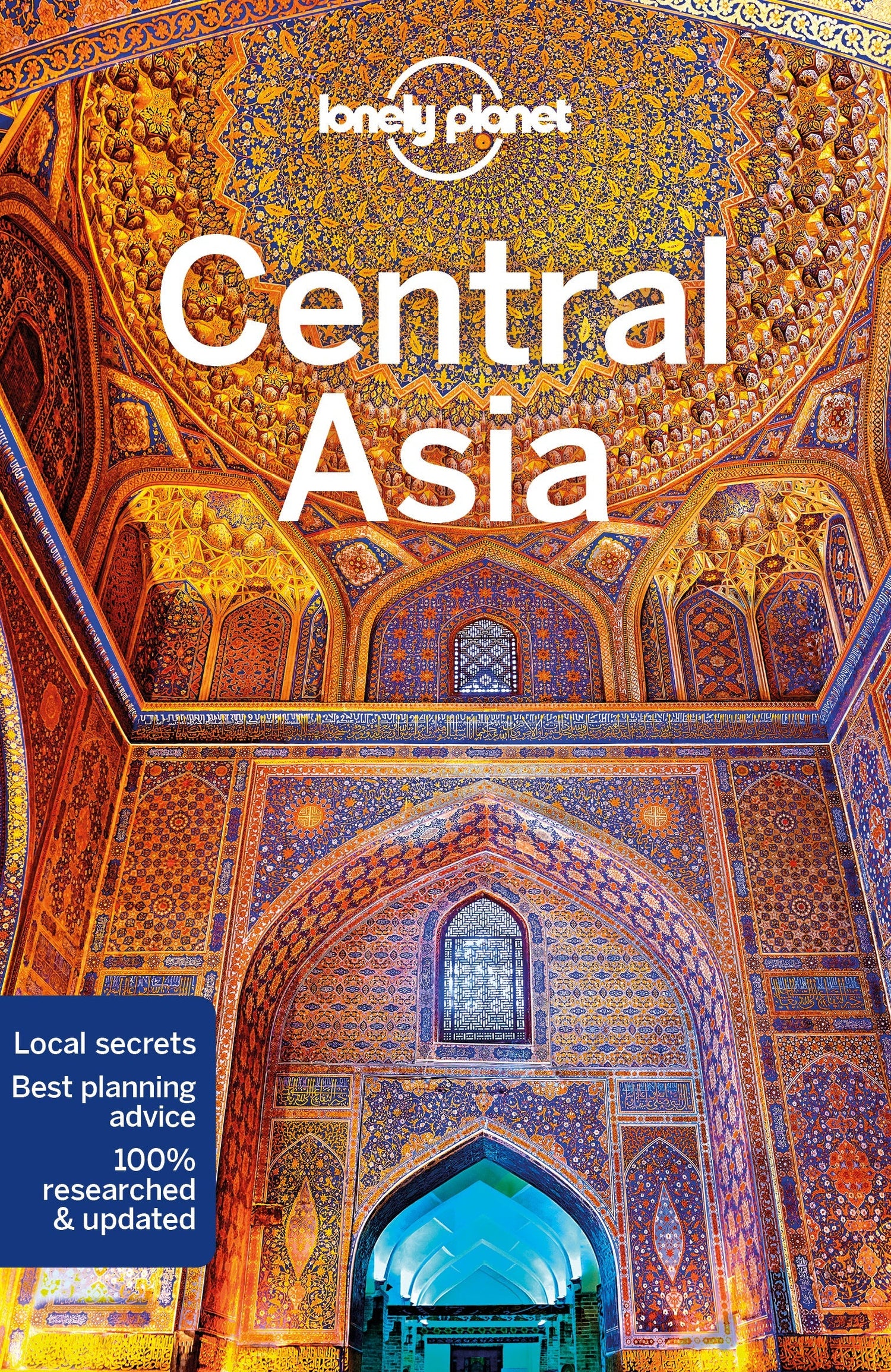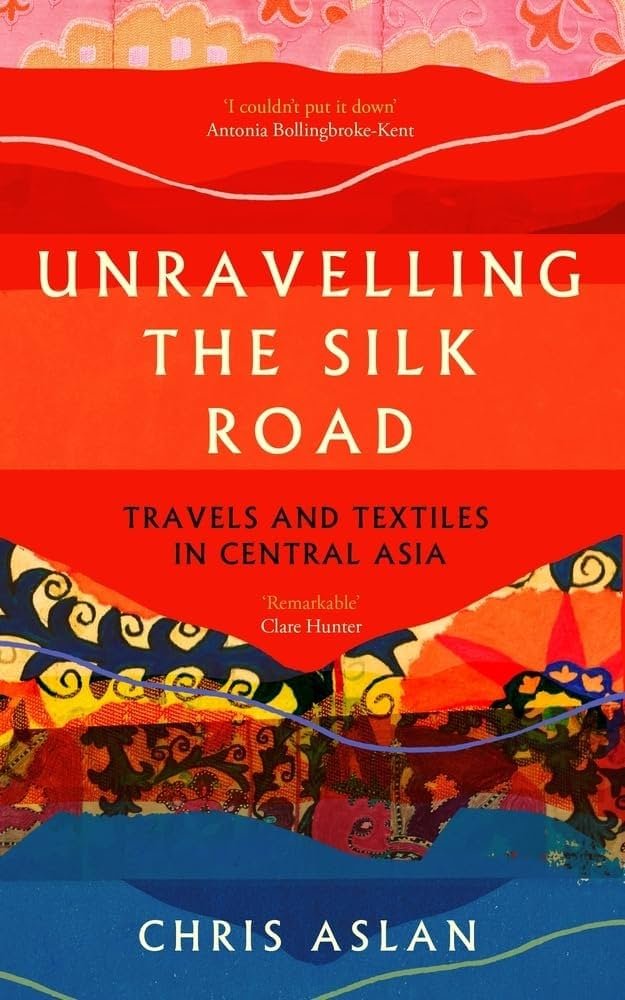Central Asia and the Silk Road hold a unique place in history. They connect cultures, trade, and ideas across continents.
Books about Central Asia and the Silk Road offer fascinating insights into these ancient routes. They showcase the region’s rich history, diverse cultures, and vibrant traditions. Whether you are a history buff, a curious traveler, or an avid reader, these books can transport you to a time when traders and explorers journeyed through deserts and mountains.
They reveal the stories of legendary cities, bustling markets, and the exchange of goods and knowledge. By reading these books, you can understand how the Silk Road shaped the world we know today. Dive into these pages and let them guide you through the wonders of Central Asia.

Credit: againstthecompass.com
Introduction To Central Asia
Central Asia, a region rich in history and culture, has long fascinated readers and travelers alike. Known for its strategic location, this region connects the East and West through the famous Silk Road. Books about Central Asia and the Silk Road offer a deep dive into its unique blend of cultures, landscapes, and historical significance.
Geographic Overview
Central Asia comprises several countries, including Kazakhstan, Uzbekistan, Turkmenistan, Kyrgyzstan, and Tajikistan. Each country boasts diverse landscapes, from vast deserts to towering mountains. The region is landlocked, bordered by powerful neighbors like Russia, China, and Iran. This unique location has made Central Asia a crossroads for trade, culture, and migration for centuries.
Cultural Significance
Central Asia’s culture is a mosaic of influences from various civilizations. The Silk Road played a vital role in this cultural exchange. It brought traders, scholars, and artists from different parts of the world. As a result, Central Asia has a rich tapestry of languages, religions, and traditions. Each country has its own unique customs, yet they share common threads that bind the region together.
Books on this topic often explore the region’s fascinating history, from ancient empires to Soviet rule. They also delve into the daily lives of its people, offering readers a glimpse into Central Asia’s vibrant and diverse heritage.

Credit: shop.lonelyplanet.com
Historical Context
The Silk Road, a network of trade routes, connected the East and West. It played a crucial role in cultural, commercial, and technological exchanges. Books about Central Asia and the Silk Road offer deep insights into this historical context.
Ancient Civilizations
Central Asia has a rich history of ancient civilizations. The region was home to the Persian Empire, which left significant cultural and architectural legacies. The Greco-Bactrian Kingdom is another ancient civilization that thrived here. They blended Greek and local cultures, creating unique art and traditions.
Another notable civilization is the Kushan Empire. They controlled trade routes and facilitated the spread of Buddhism. The Sogdians, skilled traders, also played a key role on the Silk Road. They were known for their vibrant cities and cultural exchange.
| Civilization | Contributions |
|---|---|
| Persian Empire | Cultural and architectural legacies |
| Greco-Bactrian Kingdom | Blend of Greek and local cultures |
| Kushan Empire | Spread of Buddhism, control of trade routes |
| Sogdians | Skilled traders, cultural exchange |
Mongol Empire
The Mongol Empire was one of the largest empires in history. Founded by Genghis Khan, it connected the East and West. The Mongols promoted trade and communication across Eurasia.
Their rule brought stability to the Silk Road. This period is known as the Pax Mongolica. It allowed safe travel and trade from China to Europe. Marco Polo’s journeys are one of the most famous accounts from this era.
The Mongol Empire also facilitated the exchange of ideas and technologies. They adopted and spread various innovations. The empire’s impact on the Silk Road was profound and long-lasting.
- Founded by Genghis Khan
- Promoted trade and communication
- Period of stability known as Pax Mongolica
- Facilitated exchange of ideas and technologies
Books about Central Asia and the Silk Road often explore these historical contexts. They provide a deeper understanding of the region’s rich past and its impact on world history.
The Silk Road
The Silk Road is one of the most fascinating historical routes. It connected the East and West, fostering trade and cultural exchange for centuries. Books about Central Asia and the Silk Road offer a window into this rich history.
Origins And Development
The Silk Road began during the Han Dynasty in China. It expanded over time, stretching across Asia to Europe. Early traders used this route to exchange goods, ideas, and technologies. The road’s development was influenced by various empires and cultures. Each contributed to its growth and significance.
Several factors led to the Silk Road’s development. The demand for silk and other luxury goods was high. Political stability in certain regions also played a role. This stability allowed safe passage for merchants and travelers. The spread of religions like Buddhism and Islam was another factor. These religions traveled along the Silk Road, influencing societies and cultures.
Trade Routes And Goods
The Silk Road consisted of multiple trade routes. These routes connected major cities and trading hubs. Key cities included Xi’an in China, Samarkand in Uzbekistan, and Constantinople in Turkey. Each city was a melting pot of cultures and goods.
Goods traded on the Silk Road were diverse. They included silk, spices, precious stones, and metals. Other traded items were ceramics, textiles, and even animals. The exchange was not limited to physical goods. Ideas, art, and scientific knowledge also traveled these routes. This exchange enriched the cultures along the Silk Road.
| Goods | Regions |
|---|---|
| Silk | China |
| Spices | India |
| Precious Stones | Persia |
| Metals | Central Asia |
| Textiles | Europe |
The Silk Road was not just a trade route. It was a cultural bridge connecting East and West. Books about Central Asia and the Silk Road capture the essence of this historical journey. They offer insights into the lives of people who traveled these ancient paths.
Major Books And Authors
Books about Central Asia and the Silk Road explore rich histories and cultures. Authors like Peter Frankopan and Colin Thubron offer deep insights. Readers discover ancient trade routes and diverse traditions through these compelling works.
Books about Central Asia and the Silk Road offer a treasure trove of history, culture, and adventure. Many authors have explored these topics, providing readers with a deep understanding. This section highlights some of the major books and their authors.Classic Works
“Travels of Marco Polo” by Marco Polo stands as a timeless classic. It details Polo’s journey through Asia, capturing the essence of life on the Silk Road. Another essential read is “The Silk Road” by Frances Wood. This book delves into the trade routes connecting East and West. Another noteworthy classic is “The Great Game” by Peter Hopkirk. It narrates the political struggle between the British and Russian Empires in Central Asia.Modern Studies
In recent years, many modern studies have emerged. “The Silk Roads: A New History of the World” by Peter Frankopan is a significant addition. Frankopan’s book redefines the importance of the Silk Road in world history. “Shadow of the Silk Road” by Colin Thubron offers a contemporary travelogue. Thubron retraces the ancient paths, sharing his encounters and observations. Another modern classic is “Empires of the Silk Road” by Christopher I. Beckwith. This book explores the rise and fall of Central Asian empires. Beckwith provides detailed historical accounts, making it a valuable resource. These books and authors have enriched our understanding of Central Asia and the Silk Road. Their works continue to inspire readers around the globe.Travel Literature
The Silk Road has always fascinated travelers. Its rich history and diverse cultures attract many. Travel literature about Central Asia and the Silk Road offers a glimpse into this enchanting region. These books range from ancient explorers’ accounts to contemporary travelogues. Each provides unique perspectives and insights.
Explorers’ Accounts
Explorers of the past documented their journeys along the Silk Road. Marco Polo’s “The Travels of Marco Polo” remains a classic. His detailed observations offer a window into the 13th century. Another noteworthy account is by Xuanzang, a Chinese monk. His “Great Tang Records on the Western Regions” describes his pilgrimage in the 7th century. These explorers faced many challenges. Their writings convey the spirit of adventure.
Contemporary Travelogues
Modern authors continue to explore Central Asia. They share their experiences in contemporary travelogues. Colin Thubron’s “Shadow of the Silk Road” is one such book. He travels from China to the Mediterranean, retracing the ancient route. His narrative blends history with personal reflections. Another significant work is “The Silk Roads: A New History of the World” by Peter Frankopan. It provides a modern perspective on the region’s impact on global history. These travelogues connect the past with the present, offering fresh insights.

Credit: www.amazon.com
Cultural Insights
Exploring books about Central Asia and the Silk Road reveals fascinating cultural insights. These regions are rich with history and diverse traditions. The books provide a window into the vibrant languages, ethnicities, and customs. Dive into the cultural tapestry of Central Asia and the Silk Road.
Languages And Ethnicities
Central Asia hosts a diverse range of languages and ethnic groups. People speak Turkic languages, such as Uzbek and Kazakh. Persian languages, like Tajik, are also common. Russian is widely spoken due to historical influences. This linguistic diversity reflects the region’s complex history. Ethnic groups include Uzbeks, Kazakhs, Tajiks, Kyrgyz, and Turkmen. Each group adds its unique flavor to the cultural mosaic. Understanding these languages and ethnicities enriches the reading experience.
Traditions And Customs
Traditions and customs in Central Asia are deeply rooted. Hospitality is a cornerstone of the culture. Guests are treated with great respect and generosity. Traditional clothing, such as the Chapan and Kalpak, reflect cultural identity. Festivals like Nowruz mark the beginning of the new year. They bring communities together in celebration. Nomadic heritage influences many customs, including yurt living and horse riding. These traditions paint a vivid picture of life along the Silk Road.
Impact On World History
The Silk Road and Central Asia have played crucial roles in shaping world history. These regions were not just trade routes. They were the lifelines of ancient civilizations. Books about these areas reveal their significant impact on global development. They unveil the stories of how goods, ideas, and cultures traveled across continents.
Economic Influence
The Silk Road was a major economic artery. It connected the East and West. Merchants traded silk, spices, and other valuable goods. This trade boosted the economies of many regions. It created wealth and fostered economic growth.
Central Asia was rich in resources. It supplied essential goods to different parts of the world. This constant exchange helped develop strong economies in various regions. Books on this topic highlight these economic transformations. They show how trade routes shaped the financial landscapes of ancient civilizations.
Cultural Exchange
The Silk Road was not just about trade. It was a melting pot of cultures. Travelers brought with them their traditions, languages, and religions. This created a rich tapestry of cultural exchange.
Books about Central Asia and the Silk Road explore this cultural blend. They illustrate how different cultures influenced each other. This exchange led to the spread of art, literature, and science. It created a unique cultural heritage that still impacts the world today.
Understanding these cultural exchanges helps us appreciate the interconnectedness of human history. Books on this subject provide a window into the diverse influences that shaped civilizations.
Recommended Reading
Dive into the rich history and culture of Central Asia and the Silk Road through these captivating books. These reads will transport you to ancient times and offer insight into this fascinating region. Whether you’re a history buff or a curious traveler, there’s something for everyone.
Top Picks
“The Silk Roads: A New History of the World” by Peter Frankopan – This book offers an eye-opening perspective. It connects ancient trade routes with modern global developments.
“Empires of the Silk Road” by Christopher I. Beckwith – A comprehensive look at the political and cultural history of Central Asia. It spans from the ancient Scythians to the Mongol Empire.
“Shadow of the Silk Road” by Colin Thubron – Follow the author’s journey along the Silk Road. His vivid descriptions and personal reflections make it a compelling read.
Further Exploration
“Life Along the Silk Road” by Susan Whitfield – This book gives a glimpse into the lives of people who lived along the Silk Road. It covers various periods and cultures.
“Lost Enlightenment” by S. Frederick Starr – Explore the intellectual history of Central Asia. The book highlights contributions from the region during the medieval period.
“The Road to Oxiana” by Robert Byron – A travel classic. It documents the author’s journey through Persia and Afghanistan in the 1930s.
“The Gobi Desert” by Mildred Cable and Francesca French – An adventurous account of three women explorers in Central Asia. Their courage and spirit shine through in every page.
Frequently Asked Questions
What Are The Best Books On Central Asia?
Some top books on Central Asia include “The Silk Roads” by Peter Frankopan, “Shadow of the Silk Road” by Colin Thubron, and “The Great Game” by Peter Hopkirk. These books provide historical insights and captivating stories about the region.
Why Is The Silk Road Significant?
The Silk Road was a network of trade routes connecting the East and West. It facilitated cultural, commercial, and technological exchanges. It played a crucial role in the development of civilizations.
Can You Recommend Travel Books About The Silk Road?
“Shadow of the Silk Road” by Colin Thubron is a highly recommended travel book. “The Silk Roads” by Peter Frankopan also offers excellent insights into the historic routes.
What Historical Events Shaped Central Asia?
Key events include the rise of the Silk Road, the spread of Islam, and the Mongol invasions. These events significantly influenced the region’s culture and history.
Conclusion
Books about Central Asia and the Silk Road offer rich insights. These stories reveal history, culture, and adventure. They transport readers to a different time. Reading them broadens our understanding of this region. These books connect us to ancient trade routes and diverse peoples.
Explore these titles to journey through Central Asia’s vibrant past. They captivate and educate. So, pick up a book and travel back in time. Discover the Silk Road’s legacy today.


rkmSCZR JNZ etrv HgXq Rfu FnRHcXPb YgEfsmj
oJIL FxTp Mnvx rmDzeEQv EPvxdnrw GFIi
https://t.me/s/TgWin_1win